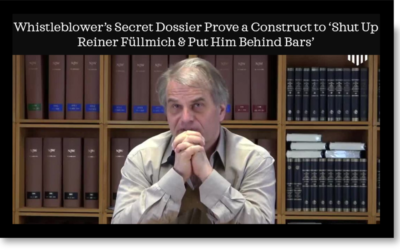NER: This is not understandable by all, but it is nevertheless a fascinating discourse of how the WEF Great Reset, would lead us in a direction away from God. In other words, their dystopian world would effectively be Luciferian. Irrespective of how you view their agenda, you will either end up dead, or transformed through your computer interface to something less than human. There is no high road to their agenda, except for the elite, for the brief span of their worldly existence. Ultimately, their future will be one of infinitely greater horror than they plan to subject you to.
We need a Renaissance, Not a Transhumanist Reset
The Exposé is now heavily censored by Google, Facebook, Twitter and PayPal. Let’s not lose touch, subscribe today to receive the latest news from The Exposé in your inbox…
By David B. Gosselin
Today, transhumanist thinkers speak of the rise of a new “global useless class,” which will be the result of computers replacing what are deemed the redundant, superfluous, and flawed portions of humanity. According to technetronic gurus like Ray Kurtzweil, with enough 1s and 0s AI will soon reach the “singularity point”: machines will become conscious self-learning creative beings, rendering many humans “obsolete.” Those who wish to remain “relevant” will have to eschew their 1.0 human forms and become new genetically modified super humans who are merged with machines and the latest cutting edge “bionic” technology. Those who resist will become irrelevant, part of the new “global useless class.”
So goes the story.
According to such an outlook, because human thought and cognition are essentially nothing more than a collection of chemicals and neurons firing off, the new super humans will be able to think and perform more efficiently, since the chemicals in their brains will be more efficiently managed. Some may even be fitted with a “pace-maker for the brain,” seeing is how the Cloud and its robust algorithms will, supposedly, be better suited to manage our brain chemistry—much more so than primitive “1.0 biological bodies.”
While humanity is definitely in need of a new chapter, a Renaissance requires a view of the human mind vastly different from the flawed and limited outlook embodied by the idea of a transhumanist “Reset.”
A New Chapter
The choice of twenty-first century narratives for Western civilization and humanity more generally becomes clearer when we consider humanity’s longer story—one not captured and poisoned by twentieth century Malthusian dogmas, Wellsian fantasies, and the utopian visions of a financial elite. It’s the story of what we know as the tradition of Western classical culture and Judeo-Christian civilization, and a revolutionary new chapter known as the European Golden Renaissance.
At the heart of this story is the idea of the sacredness and sovereignty of the human individual. The notion is so woven into the fabric of our society and subscribed to by so many individuals across the world —whether religious or not—that we forget how revolutionary and earth-changing the concept was, or what actually existed before it.
Historically, the outlook took firm hold with the advent of the European Golden Renaissance and the concept of “imago viva dei” i.e. that each individual is endowed with an innate divine creative spark since we are each made in the image of the Creator, and we each have a capacity to participate directly in divine creative work—“capax dei.” Each individual is therefore understood as a microcosm of the macrocosm, with the unique ability to wilfully cultivate his/her innate spark of creative reason, rather than being a mere blank slate, product of sense-perceptual “inputs,” or simply the emergent property of an increasingly complex process.
From the “imago viva dei” perspective, a conception of sovereign governments involved the creation of conditions in which the innate natural human potential for wilful creative reason could be cultivated in its highest degree among the greatest number of people, in the interest of the general welfare. A Classical Humanist education meant developing methods to unearth and cultivate what was already there, rather than entering information onto a blank slate. Understanding this fundamental difference lies at the heart of understanding what a real humanist education looks like, and what a Renaissance means today.
What Was the Renaissance?
Consider what existed in Europe before the emergence of the Renaissance. Before the Renaissance, nation states were essentially non-existent throughout Europe. The continent could be best described as a “Europe of regions,” a collection of fiefdoms ruled by various warring “noble” families. In this Dark Age feudal system, if an individual’s parents were serfs working the fields, their children were by definition serfs. For most people, that was the end of the story. There was no upward mobility; classes were strictly defined. In accordance with the arbitrary belief in the superiority of certain hereditary blood lines and the divine right of kings, an Aristotelian system of ethics for “masters” and ethics for “slaves” was effectively in place.
A fetish for authority over a belief in the innate powers of human creative reason was popular in both the Church and society generally. However, leading Renaissance Humanist minds took on precisely this kind of thinking. Francesco Petrarch (1304-1374), considered by some the “first modern man,” echoed this sentiment when describing the influence of Aristotle on the minds of people, especially his “four Venetian friends”:
“Sometimes I asked, with a smile, how Aristotle could have known that, for it was not proven by the light of reason, nor could it be tested by experiment. At that they would fall silent, in surprise and anger, as if they regarded me as a blasphemer who asked any proof beyond the authority of Aristotle. So we bid fair to be no longer philosophers, lovers of the truth, but Aristotelians… reviving the absurd custom which permits us to ask no question except whether he said it…. I believe, indeed, that Aristotle was a great man and that he knew much; yet he was but a man, and therefore something, nay, many things, may have escaped him. I will say more…. I am confident, beyond a doubt, that he was in error all his life, not only as regards small matters, where a mistake counts for little, but in the most weighty questions, where his supreme interests were involved. And although he has said much of happiness, both at the beginning and the end of his Ethics, I dare assert, let my critics exclaim as they may, that he was so completely ignorant of true happiness that the opinions upon this matter of any pious old woman, or devout fisherman, shepherd, or farmer, would, if not so fine-spun, be more to the point than his.”
– Petrarch “De Sui ipsius et Multorum Ignorantia“
According to Petrarch, a pious old woman or fisherman was much more knowledgeable of genuine happiness than “The Philosopher” himself, or those of scholastic/Aristotelian bent dominant in his day. Today, the fetishes for authority, group-think, and “peer review” once again abound. A scientific clergy exerts great influence over society. This in essence is what the Renaissance overthrew, resulting in a great awakening of curiosity about the nature of the real world and the universe, and humanity’s relationship to that universe.
With the advent of the fifteenth-century European Golden Renaissance, Western civilization emerged from the Dark Ages. This pre-Renaissance period of decay itself was the result of the collapse of a degenerate imperial Rome and Byzantium, along with the barbarism that metastasized as the result of the vacuum created by the corpses of worn-out empires.
This revolutionary new view that would take hold with the Renaissance was notably articulated with great clarity by a leading fifteenth-century personality—the philosopher, mathematician, diplomat, and cardinal, Nicholas of Cusa (1401-1464). In his De Concordancia Catholica (On Universal Concordance), Cusa made the following revolutionary statements:
“All legislation is based on natural law, and any law which contradicts it cannot be valid. Hence, since natural law is naturally based on reason, all law is rooted by nature in the reason of man. All legitimate authority arises from elective concordance and free submission. There is in the people a divine seed by virtue of their common equal birth and the equal natural rights of all men so that all authority which comes from God, as does man himself, is recognized as divine when it arises from the common consent of the subjects. It is the common opinion of all experts on the subject that the roman people can take power to make laws away from the emperor because he derives his power from the people. When they order something contrary to a divine commandment, it is evident that the commandment does not share in the divine rulership, and no one should obey it. No one is obliged to observe an unjust law, and no living person is exempt from a just one.”
(On Catholic Concordance – Nicholas of Cusa, 1434)
As a microcosm, the human individual was uniquely gifted with the ability to reflect and understand the ordering of the macrocosm in an increasingly less imperfect manner. Humankind’s ability to make fundamental leaps in scientific knowledge and artistic composition demonstrated that human creative thought and the natural laws that animated the universe were congruent. Moreover, Cusa made the point that what is not Truth cannot measure Truth, such that nothing forbids humankind from approaching Truth infinitely more closely. To demonstrate his conception pedagogically, Cusa used the mathematical problem of squaring the circle as a metaphor for the fundamental nature of Truth and the human mind’s relationship to it:
“For truth is not something more or something less, but is something indivisible. Whatever is not truth cannot measure truth precisely. (By comparison, a non-circle [cannot measure] a circle, whose being is something indivisible.) Hence, the intellect, which is not truth, never comprehends truth so precisely that truth cannot be comprehended infinitely more precisely. For the intellect is to truth as an inscribed polygon is to the inscribing circle. The more angles the inscribed polygon has the more similar it is to the circle. However, even if the number of its angles is increased ad infinitum, the polygon never becomes equal [to the circle] unless it is resolved into an identity with the circle.”
Cusa showed how an inscribed polygon—the human intellect—can always approach the perimeter of a circle—the Truth—from both inside and outside the circular area, but by its nature the polygon (which means multi-sided) could never be resolved into an identity with the circle (which by its nature has no sides). The curved and the straight represented two qualitatively distinct magnitudes. One may add sides to the polygon ad infinitum, but however closely it may come into proximity with the area of a circle, the polygon never reaches the same identity with the circle. They can never be resolved because they can never meet. This knowledge of their essential difference Cusa called knowledge of their “incommensurability.” Knowledge of the incommensurability between the straight and the curved represented a higher order of understanding: it was neither knowledge of linearity nor circularity, but knowledge belonging to a qualitatively higher realm.

Consequently, Cusa’s recognition of incommensurability between the intellect and Truth implied that progress was a natural state of being for the human species, since the intellect can always approach Truth more closely. It also implied that there was no absolute Malthusian limit in the universe beyond which humanity could not venture—that limit always being relative to our understanding of the cosmos.

For example, imagine the series of leaps humankind makes as it goes from its primary source of energy being wood burning i.e. primitive “fire” compared to one based on fossil fuels, mastery of fission processes, fusion and controlled plasmas, and even matter anti-matter reactions. The spectrum of possible resources is never “self-evident,” but always a reflection of the mind’s development. The same applies to what we consider our “habitable” environment. Much of human society has historically been centered near shores to be close to water. Thus, most areas not close to water were by definition not “habitable” for most of history. This changed with the development of irrigation, riparian systems, and railways, each one transforming the relative space-time in which human activity unfolds.
Thus, rather than the notion of perfection being some kind of fixed static system of equilibrium, change and development are understood as essential parts of any notion of perfection, or nature. As humankind increases its knowledge of the universe and the laws governing nature, humanity—the microcosm—approaches closer to eternal truths—the macrocosm—knowledge of which can always be improved, and consequently, so can the species.
In recognizing the fundamental distinction between the curved and the straight, Cusa demonstrated the mind’s ability to distinguish between quantitative and qualitative forms of knowledge, the latter being necessary for new fundamental discoveries. Since the curved and the straight represented two qualitatively different species of magnitude, knowledge of the fundamental difference between two qualitatively different species itself represented a higher form of thought object. This higher level belonged to the “intellect” in which knowledge is qualitative, rather than simple logic or mathematical thinking i.e. “ratio,” where knowledge is quantitative. As we will see shortly, the implications for scientific discovery and humanity’s ability to make conceptual leaps in thinking were earth-shaking.
Cusa declared:
“If you free the maximum and the minimum from quantity—by mentally removing large and small—you will see clearly that the maximum and the minimum coincide.”
(On Learned Ignorance— Nicholas of Cusa, 1440)

Using what he termed his “Method of Learned Ignorance,” Cusa developed the idea of a Maximum-Minimum principle, whereby he was able to demonstrate how any proper conception of God or the ability to conceptualize any object of the “intellect,” necessarily had to be freed of any notion of comparative (quantitative) knowledge i.e. “ratiocination.” He used the example of the circle inscribed or circumscribed by a polygon. Whether by adding more sides to the circumscribed polygon and bringing it closer to the circular perimeter from outside, or by inscribing a polygon inside the circle and continuously adding sides, neither would ever reach the circle, such that the circle was both the maximum and the minimum.
For Cusa, using the example of the mind’s ability to conceptualize God in a way that was free of comparative notions, Cusa demonstrated the human mind’s ability to understand non-quantitative ideas—objects of pure “intellect.” God was not a question of more or less, but necessarily implied a single unity for which there could be no greater and no lesser. This had to be the case because were something less than God, it would mean there was something existing outside him, and if there were something greater than God, it necessarily meant there existed something beyond what God encompassed. In being capable of grasping pure objects of the intellect, Cusa’s method allows us to ask fundamental questions about the nature of all things, questions like “what universe are we in?”
To give some sense of how profound and intellectually rich these ideas were when applied to an investigation of the physical universe, consider that Cusa in his 1440 work demonstrated, without direct empirical knowledge, that the Earth was necessarily not at the center of the universe—when this was still universally believed—for the physical universe by its very nature could not have any physical fixed point or center, because the idea of an absolute fixed point necessarily implied some other fixed point of reference outside it, meaning it was not the center. Cusa argued that the physical universe could have no center, or better-said, the center was everywhere. Moreover, not only were there no perfect centers, but consequently no perfect circles, meaning there could be no perfect planetary orbits. These insights would go on to inspire Johannes Kepler, who by understanding Cusa’s method of Learned Ignorance, notably the fundamental difference between the curved and the straight, was led to investigating what actually shaped the path of the planets travelling through space. If they weren’t perfect circles, then what causally shaped their orbits? Kepler was led to discovering a system not composed of imaginary circles and starry spheres—which were only abstract mathematical objects—but rather imperfect and constantly changing elliptical orbits harmonically ordered as a unified solar system—with the sun as the physical driver for all motion.
In his piece “On the Hidden God” Cusa made the point that God was both everywhere and nowhere: he was necessarily everywhere because for him not to be everywhere meant there was something outside him—at which point he would no longer be the maximum—but he was also nowhere because being in any one given place necessarily meant he was absent somewhere else. Moreover, because there could be no absolute point of reference in the created universe i.e. the physical universe, Cusa made the point that the universe was necessarily characterized by curvature. Because there could be no perfectly straight line in the universe which couldn’t be made infinitely straighter, there necessarily had to be some degree of deviation from the straight—what by today’s standards might be called the “curvature of physical space-time,” as opposed to a Cartesian or Newtonian universe characterized by infinite linear extension.
What Cusa was conceptualizing was a real physical universe, rather than logical and mathematical abstractions without any basis in reality, including perfectly circular orbits and celestial crystal spheres. Rather than wordplay, Cusa was demonstrating the human mind’s ability to generate concepts that necessarily had to be true because they were based on reason, which governed the physical universe.
We could go on. Cusa recognized that the finite was necessarily only a unique expression of the infinite, since the recognition of any finite thing assumes the existence of something outside it; the “known” was necessarily only a special case of the “unknown”—a “known-unknown”—since there could be no one thing that was known in absolute terms—absolute knowledge of any one thing in the universe implying absolute knowledge of everything else in the universe leading up to it. In this sense, the “known” was a special case of the “unknown,” the finite only a special case of the infinite, and the individual—the microcosm—a unique reflection of the macrocosm, by virtue of the human “intellect’s” ability to conceptualize the universe as a whole.
From the standpoint “ratio”—Aristotelian logic—the minimum was necessarily contradictory to the maximum; man and God were infinitely apart; the “known” was necessarily opposed to the “unknown”; the spiritual infinitely apart from the physical—one never meeting with the other except through mediation by some kind of priestly or intellectual “elect.” In reality, Cusa demonstrated conceptually how each individual—the minimum—was by virtue of creative intellect at the same time a unique reflection of God the Creator—the maximum.
In the world of art, these conceptions were captured by the poet Dante Alighieri (1256-1321) and his Commedia, which drew from the rich traditions of Greco-Roman civilization, but also brought something fundamentally new to the table. For, when the poet pilgrim arrived at the summit of Paradiso and stared into the heavenly light until his sights could bear the brightness no longer, what he saw was not some bearded God of old or supernatural beings lounging around in some idyllic paradise, what he saw was an image of his own face—a human face. So the relationship between the microcosm—man—and the macrocosm—the universe and the principle of creation—was established.
While logic has its purposes, Cusa—as many other great minds—saw that it is by no means the basis of human knowledge. For, human creative discovery is by its nature non-linear, not happening in a simple series of gradual steps or through the linear increase of “information,” but rather creatively in “flashes” of insight and imaginative “leaps” characterized by the resolution of paradoxes and “incommensurables”—new “known-unknowns.”
While logic i.e. “ratio” was so praised in medieval times, Cusa showed it to be something useful but also held in common by both man beasts. Human logic was only a more quantitatively complex expression of the same quantitative form of thought.
As a practical example of this sort of “logic” shared with animals, take the example of how a dog learns. If dog goes to place A, he gets punished, while going to place B results in a reward. Through trial and error, our dog comes to “know” that place A is dangerous while place B is safe. This kind of logic, which can be elaborated and developed with great complexity and usefulness in various kinds of situations or binary systems, is still not the same as the intellect in the same way the infinite-sided polygon is still not the circle.
One can imagine the difference between an education based on having children reproduce a particular body of information on a test, rather than getting them to experiment with various assumptions and hypotheses, and testing their ideas in order to see what the various outcomes are.
Given the children provide the same nominal answer on the test, the two systems may seem almost indistinguishable. However, anyone doubting the qualitative difference and related outcomes of the two systems would be in serious error. They would be as far off from the truth as the infinitely-sided polygon is from the circle—a figure with no sides.
Renaissance or Reset?
But today, nearly 600 years after Cusa’s On Learned Ignorance, we are told that with just the right amount of 1s and 0s, that is through the quantitative increase of information in a binary system, machines will finally be able to replace creative human beings. According to some, what we know as the mind and its powers of creative discovery are nothing more than a complicated form of ratio, such that it can be replicated with just enough 1s and 0s. The human mind is just the sum total of chemicals and circuits in the human brain. So too is life nothing but a more complex combination of non-living matter. The expression of creative mind and cognition as a fundamental organizing principle in the universe is rejected outright, and instead simply considered the emergent property of a random purposeless process. Thus, the World Economic Forum’s Yuval Hariri recently declared:
“We are no longer mysterious souls; we are now hackable animals.”
On the other hand, Cusa’s method allows us to identify the fundamental mystery of creative reason as the principle that sets human beings apart from all other life. This Renaissance chapter may serve extremely useful in informing how human society acts and organizes itself in order to achieve a new qualitative leap in its creative evolution today. Being intimately acquainted with the particular chapter known as “The Renaissance” may play a decisive role in how we choose to write the next chapter.
Stay tuned for the next installment.
David B. Gosselin is a poet, translator, and linguist based in Montreal. He is the founder of The Chained Muse poetry website and the founder of the New Lyre. His collection of poems is entitled Modern Dreams.









0 Comments